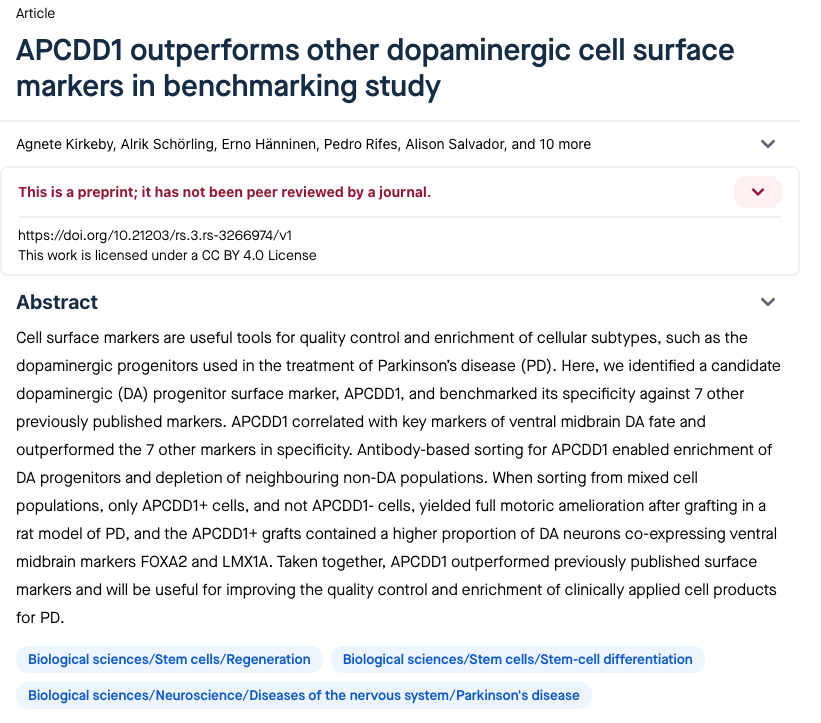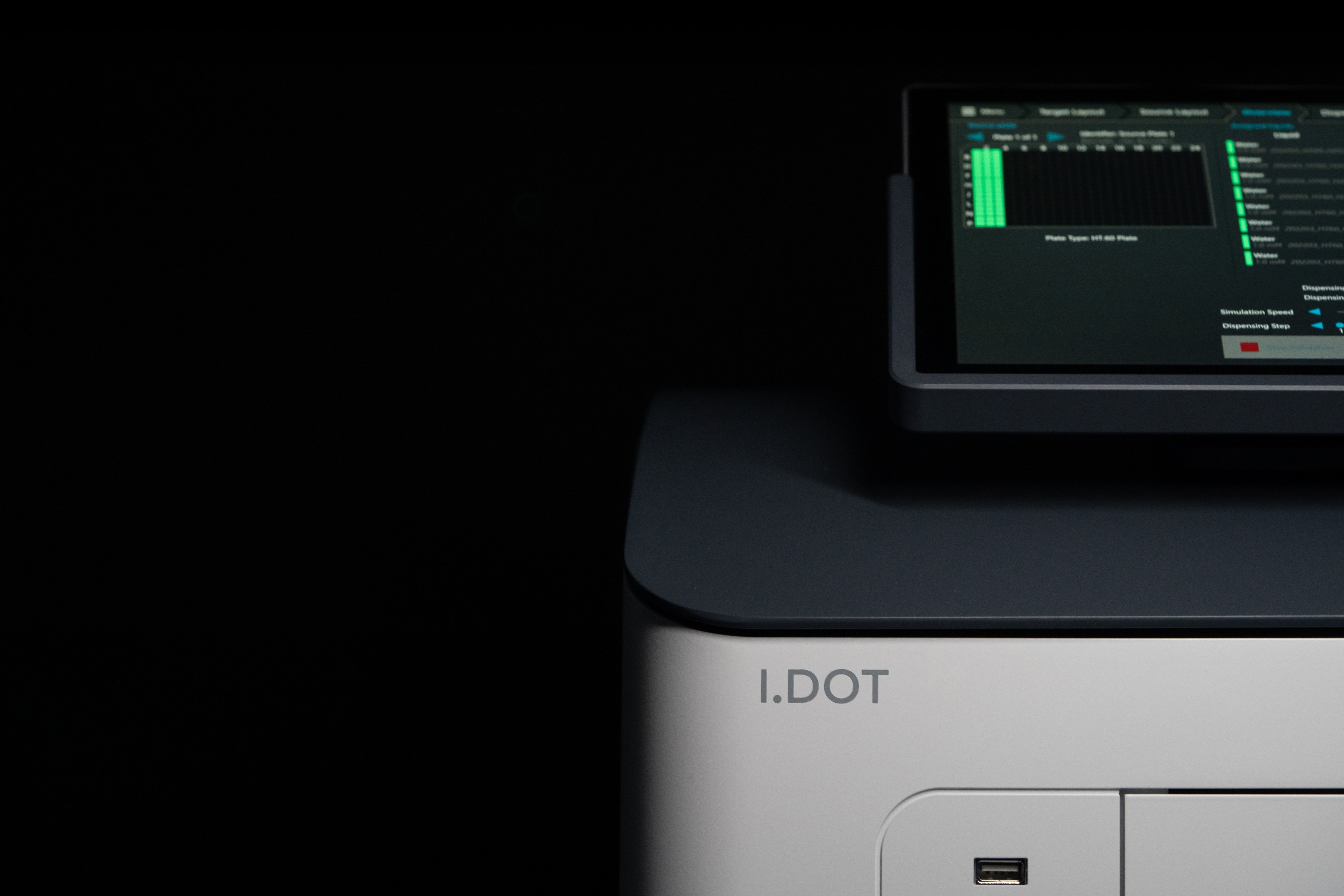In the fight against Parkinson's disease (PD), researchers at the University of Copenhagen and Novo Nordisk Foundation Center for Stem Cell Medicine (reNEW) are testing cell therapy using dopaminergic progenitors, young cells that can mature into dopamine-producing neurons in the paper APCDD1 outperforms other dopaminergic cell surface markers in benchmarking study.

Figure 1. Preprint of the paper APCDD1 outperforms other dopaminergic cell surface markers in benchmarking study.
Finding the right type of these progenitors is crucial. This study discovered a promising candidate dopaminergic (DA) progenitor surface marker, called APCDD1, that identifies true dopaminergic progenitors better than any other known marker. By using this marker, the researchers can sort out the best cells for therapy, leading to potentially improved treatments for PD. It's like having a better sorting tool to pick the right type of building blocks for building healthy brain circuits.
APCDD1 is a major advance in identifying and selecting the right cells for PD therapy, paving the way for more effective treatments in the future.
Sample Preparation Workflow
The researchers isolated RNA from neuronal progenitor cells and then used qRT-PCR to measure the expression of several genes (Fig. 2). They used this information to quality control the cells and make sure that they were the right type of cells for their study.

Figure 2. Sample preparation workflow for Kirkeby, Schörling, Hänninen, et al. (2023).
Quantitative real-time PCR (qRT-PCR)
The researchers used the RNeasy® Plus Micro Kit (Qiagen) to isolate RNA from day 11 and day 16 neuronal progenitor cells. The Maxima First Strand cDNA Synthesis Kit for RT-qPCR (Thermo Fisher) was used to synthesize cDNA.
qRT-PCR was performed using Sybr Green Mastermix (Roche Life Sciences) and primers using an automated pipetting instrument or the I.DOT Liquid Handler (DISPENDIX) (Fig. 2).
Samples were analyzed on a LightCycler 480 instrument (Roche Life Sciences) using a two-step protocol with a 60 °C annealing/elongation step. Samples were run in technical duplicates, and the averaged Ct values were used for calculations.
Only batches of cells that passed the stringent QC criteria, based upon the qRT-PCR data, were included in the study.

Elevate Your qRT-PCR Workflow
Are you tired of tedious pipetting and unreliable results in your qRT-PCR experiments? I.DOT Liquid Handler offers a game-changing solution. Our intelligent liquid handler streamlines your workflow, automates complex protocols, and delivers pristine accuracy you can trust.
Stop settling for the limitations of manual pipetting. Embrace automation and unlock the full potential of your qPCR workflow. Request a free demo today and see how our liquid handler can elevate your research to new heights.
References
Agnete Kirkeby, Alrik Schörling, Erno Hänninen et al. APCDD1 outperforms other dopaminergic cell surface markers in benchmarking study, 15 September 2023, PREPRINT (Version 1) available at Research Square [https://doi.org/10.21203/rs.3.rs-3266974/v1]